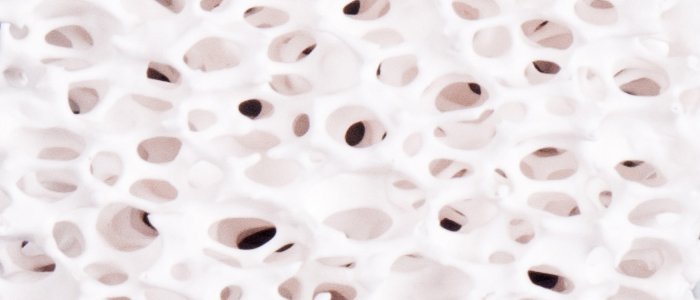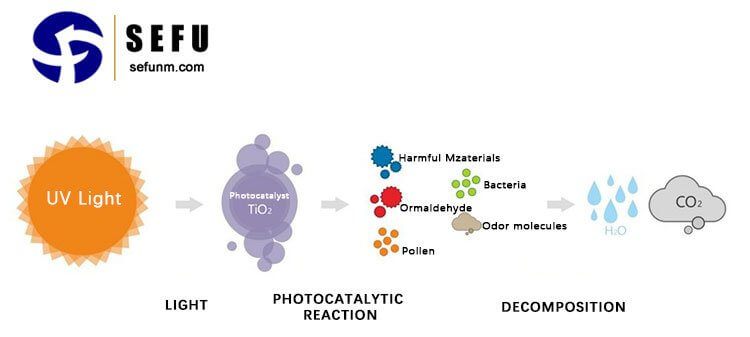Introduction:
Porous ceramic material has garnered significant interest in various industries due to its unique properties and wide-ranging applications. With their intricate network of interconnected pores, these materials possess exceptional properties that make them suitable for filtration, catalysis, thermal insulation, biomedical devices, and more. This article aims to explore the characteristics, manufacturing methods, and diverse applications of porous ceramic material.
I. Characteristics of Porous Ceramic Material:
Porous ceramic is known for its ability to control pore size, shape, and distribution. These characteristics play a crucial role in determining the material’s properties and applications. The porosity in these ceramics typically ranges from a few percent to more than 90%, and pore sizes can vary from nanometers to millimeters.

II. The key properties of porous ceramic material include:
High Surface Area:
The intricate network of pores provides an extensive surface area, which is beneficial for catalytic reactions and gas adsorption processes.
Thermal Stability:
Porous ceramics exhibit excellent thermal stability, making them suitable for high-temperature applications.
Chemical Inertness:
These materials are chemically inert, resisting corrosion and degradation in harsh environments.
Mechanical Strength:
Porous ceramics can be engineered to possess sufficient mechanical strength to withstand mechanical stresses in various applications.
Tailorable Porosity:
The porosity and pore size can be controlled during the manufacturing process, enabling customizability for specific applications.
III. Manufacturing Methods:
The porous ceramic material can be manufactured using several techniques, each offering distinct advantages based on the desired characteristics.
Foam Replication:
This method involves replicating the porous structure of template material, such as polymeric foam or sacrificial particles, to create ceramic foam with a similar pore network.
Sol-Gel Method:
In this approach, ceramic particles are dispersed in a sol-gel precursor solution, and controlled gelation and drying lead to the formation of a porous ceramic structure.
Powder Sintering:
By compacting and sintering ceramic powders, controlled porosity can be achieved based on particle size distribution and sintering conditions.
Freeze Casting:
Utilizing the principle of ice crystal formation, this method creates a porous ceramic structure by freezing a ceramic slurry.
IV. Applications of Porous Ceramic Material:
A. Filtration and Separation: Porous ceramic material finds extensive use in liquid and gas filtration processes. Their tunable porosity and high surface area allow efficient removal of impurities and particulate matter.
Catalysis:
The large surface area and availability of active sites make porous ceramics excellent catalyst supports for various chemical reactions.
Thermal Insulation:
Their low thermal conductivity makes porous ceramics valuable in thermal insulation applications.
Biomedical Devices:
Porous ceramic has been utilized in bone tissue engineering, drug delivery systems, and dental implants due to its biocompatibility and controllable porosity.
Environmental Applications:
These materials play a role in environmental remediation processes, such as the adsorption of pollutants from water and air.
Aerospace and Defense:
Porous ceramics are used in rocket nozzles, thermal protection systems, and as lightweight structural components in aerospace applications.
V. Advancements in Porous Ceramic Material:
In recent years, advancements in materials science and manufacturing techniques have led to the development of novel porous ceramic material with enhanced properties and performance. Researchers continue to explore new methods to optimize the porosity, pore size distribution, and mechanical strength of these materials.
Hierarchical Porous Structures:
Scientists have been successful in creating hierarchical porous structures in ceramics, incorporating multiple levels of porosity. This approach allows for more efficient mass transport, improved catalytic activity, and enhanced mechanical properties.
Nanoporous Ceramics:
Nanotechnology has facilitated the creation of nanoporous ceramics with pore sizes in the nanometer range. These materials have shown great potential in applications requiring precise control over molecular interactions and selective adsorption.
Graded Porosity:
Porous ceramics with graded porosity, where the pore size varies along the depth or thickness of the material, have been developed. This design enhances filtration efficiency and catalytic performance by optimizing the interaction with the flowing medium.
Self-Healing Porous Ceramics:
Researchers have explored self-healing mechanisms in porous ceramic material, enabling them to recover their integrity when subjected to cracks or damage. This development could have significant implications for structural applications.
VI. Emerging Applications:
The versatility of porous ceramic has led to the exploration of various emerging applications:
Energy Storage:
Porous ceramics are being investigated as electrode materials for energy storage devices like lithium-ion batteries and supercapacitors. Their high surface area and tunable porosity can improve ion diffusion and storage capacity.
Photocatalysis:
Nanoporous ceramics with tailored bandgap energies are promising materials for photocatalytic applications. They can harness solar energy to drive chemical reactions, such as water splitting for hydrogen production and environmental pollutant degradation.

3D Printing:
Advances in additive manufacturing techniques have enabled the fabrication of complex geometries with tailored porosity using porous ceramic material. This innovation opens up new possibilities for customized components and structures in various industries.
Gas Sensors:
Porous ceramic with specific surface functionalizations has shown potential as gas sensors, detecting trace amounts of gases in environmental monitoring and industrial safety applications.
VII. Challenges and Future Prospects:
While porous ceramic material has made significant strides in various fields, some challenges remain:
Durability:
The mechanical durability of porous ceramics under harsh operating conditions is a concern, especially in high-temperature and corrosive environments.
Cost-Effectiveness:
The manufacturing of porous ceramic material using advanced techniques can be costly. Research is ongoing to optimize production processes and reduce material costs.
Scalability:
For widespread adoption in industrial applications, the scalable production of large-sized, high-quality porous ceramics is essential.
Integration with Other Materials:
Combining porous ceramics with other materials to form hybrid structures can create multifunctional materials with enhanced properties, but ensuring compatibility and stability remains a challenge.
Despite these challenges, the future of porous ceramic material looks promising. Ongoing research in materials science, nanotechnology, and advanced manufacturing techniques will continue to drive innovation, unlocking new applications and improving the performance of existing ones. The versatility, customizability, and unique properties of porous ceramics position them as valuable materials in advancing technologies across diverse industries.
Conclusion:
Porous ceramic material represents a fascinating and rapidly evolving field of materials science. Their diverse range of properties and applications make them indispensable in filtration, catalysis, thermal insulation, biomedical devices, and more. Advancements in materials design, manufacturing techniques, and emerging applications open up exciting possibilities for these materials in energy storage, photocatalysis, 3D printing, gas sensors, and beyond. As research continues, porous ceramic material will undoubtedly play a vital role in addressing various challenges and meeting the demands of future technologies.

